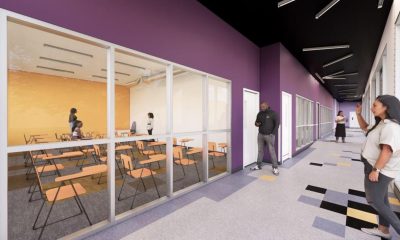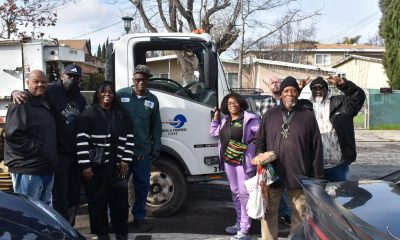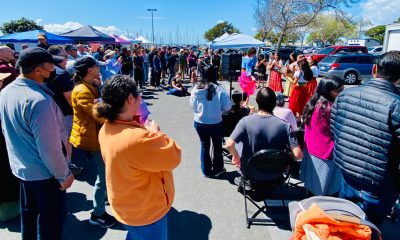#NNPA BlackPress
Historic March on Washington Anniversary Commemorated with Calls for Continued Civil Rights Struggle
NNPA NEWSWIRE — The original March on Washington, a cornerstone of the civil rights movement, drew approximately 250,000 participants in 1963. Its influence paved the way for significant legislative milestones, including the passage of federal civil rights and voting rights laws in the 1960s. The erosion of voting rights, recent Supreme Court rulings that impact affirmative action and abortion rights, and the rise of hate and violence against marginalized communities, however, punctuate the current commemoration.
The post Historic March on Washington Anniversary Commemorated with Calls for Continued Civil Rights Struggle first appeared on BlackPressUSA.
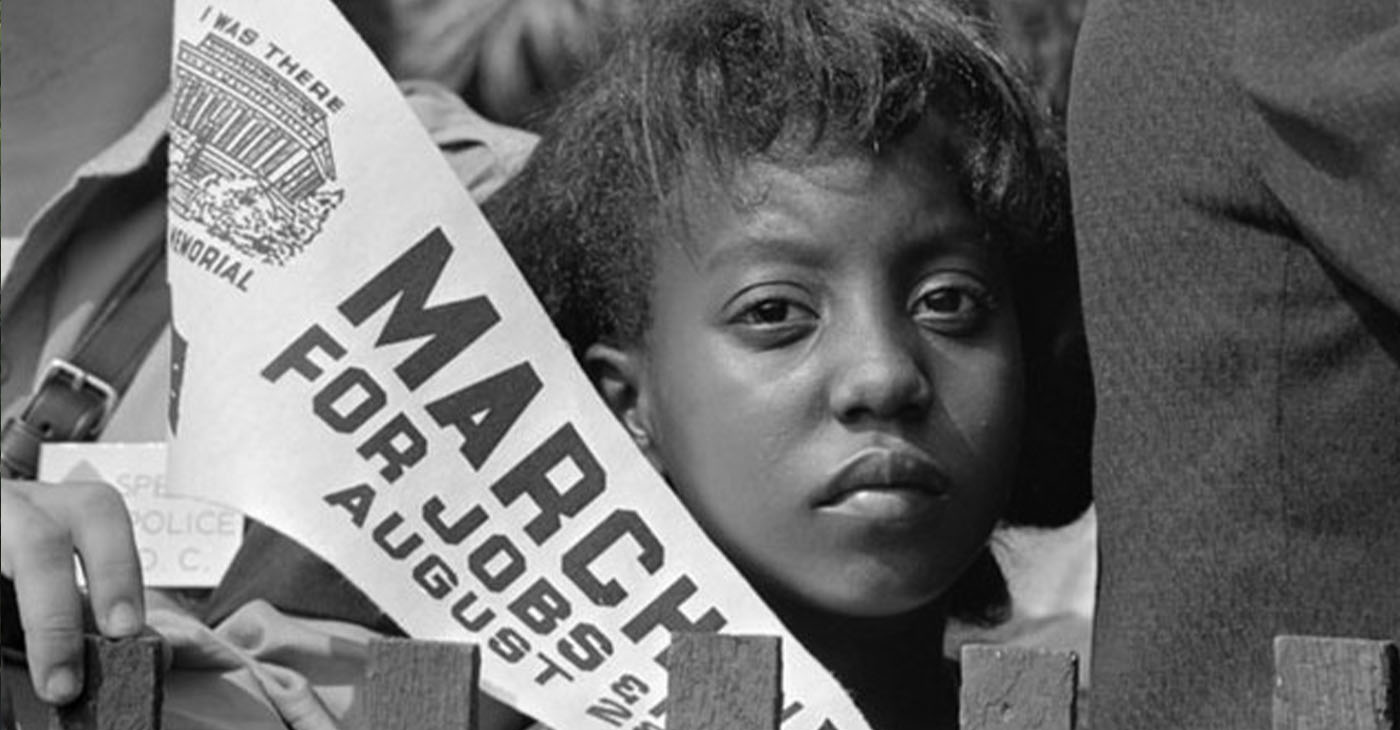
By Stacy M. Brown, NNPA Newswire Senior National Correspondent
@StacyBrownMedia
On the anniversary of the iconic March on Washington, civil rights leaders and a diverse coalition of allies convened at the historic gathering site to honor the legacy of Dr. Martin Luther King Jr. and advocate for renewed commitment to social justice. The event, convened by the Kings’ Drum Major Institute and the National Action Network, aimed to rekindle the spirit of the 1963 march, which played a pivotal role in advancing civil rights and voting rights legislation.
The original March on Washington, a cornerstone of the civil rights movement, drew approximately 250,000 participants in 1963. Its influence paved the way for significant legislative milestones, including the passage of federal civil rights and voting rights laws in the 1960s. The erosion of voting rights, recent Supreme Court rulings that impact affirmative action and abortion rights, and the rise of hate and violence against marginalized communities, however, punctuate the current commemoration.
Martin Luther King III, the eldest son of the civil rights icon, along with his sister Bernice King, visited their father’s monument in Washington on the eve of the event. Bernice King shared her reflections, stating, “I see a man still standing in authority and saying, ‘We’ve still got to get this right.’”
Addressing the urgency of the occasion, King III emphasized, “This is not a traditional commemoration. This really is a rededication.” Among the featured speakers was Ambassador Andrew Young, a close adviser to Dr. King during the original march and a key figure in the civil rights movement. Leaders from the NAACP and the National Urban League also delivered impactful remarks.
Arndrea Waters King also addressed the tens of thousands on the mall. “We are here to liberate the soul of the nation, the soul of democracy from those forces who want to have us all go backwards and perish rather than go forward as sisters and brothers,” she stated. “We will never betray those who marched for us, fought for us, lived for us, died for us. We are the children and grandchildren of their struggles, and we will be worthy of their sacrifices.”
Several members of the Congressional Black Caucus, including House Minority Leader Hakeem Jeffries of New York also spoke during the event. “We’re here today to fight for voting rights,” urged Jeffries, the first Black congressperson to lead a major political party in Congress. “We’re here today to fight for civil rights. We’re here today to fight for reproductive rights. We’re here today to fight for workers’ rights,” he said.
Notably absent from the program were several individuals who had worked closely with Dr. Martin Luther King Jr., such as Dr. Benjamin F. Chavis Jr. and the Rev. Peter Johnson, a Plaquemine, Louisiana, native and close aide to civil rights giant Andrew Young, and the Rev. Ralph Abernathy. Despite their significant contributions to the movement, they did not receive invitations to participate in the commemoration, shedding light on the challenge of preserving historical continuity and recognizing all those who played a role. However, Chavis was spotted among the crowd giving a hug to an unidentified Jewish man who had singled him out. “We were here 60 years ago, and we were both 15,” the man said to Chavis.
America’s “Black Attorney General,” civil rights lawyer Ben Crump embraced his hard-earned moniker, whipping the crowd into a frenzy by insisting that he would fight “until hell freezes over.” “As your attorney general, I declare now more than ever, that we must be unapologetic defenders of Black life, liberty, and humanity,” Crump remarked. “Just like they try to ban our Black history, we must tell them without Black history, you would not have American history. Just as the fight for the families of Trayvon Martin, Eric Garner, Tyre Nichols and so many others, Americans must now fight for Black literature and culture.”
Rev. Jesse Jackson, another prominent civil rights-era figure, wasn’t expected to attend due to ongoing health concerns. The absence of these veteran activists threw a damper on an otherwise remarkable occasion.
Ahead of the event, several organizers engaged in discussions with Attorney General Merrick Garland and Assistant Attorney General Kristen Clarke of the civil rights division. The talks encompassed crucial issues like voting rights, policing reform, and addressing redlining practices.
The commemoration served as a prelude to the upcoming 60th anniversary of the original March on Washington, which President Joe Biden and Vice President Kamala Harris plan to observe on Monday, Aug. 28. During that scheduled meeting, Biden and Harris will engage with organizers of the 1963 march as well as members of the King family, aiming to honor the legacy of the event and its enduring impact on the struggle for civil rights.
As Rev. Al Sharpton, founder of the National Action Network, reflected on the continuous observance of March on Washington anniversaries, he recalled a promise he made to Coretta Scott King, the matriarch of the King family. Twenty-three years ago, she urged him and Martin Luther King III to continue the movement’s legacy. Sharpton, who didn’t serve during the early civil rights movement like Chavis, Johnson, Young, Jackson, and others, expressed his dedication to this cause, emphasizing the need to persist despite setbacks in civil rights protections.
The challenges the civil rights movement faced weren’t confined to the past; history revealed moments of triumph and tragedy. Following Dr. King’s landmark speech in 1963, dark incidents such as the 16th Street Baptist Church bombing in Birmingham and the abduction and murder of civil rights workers in Mississippi underscored the ongoing struggle. Those tragedies spurred the passage of pivotal legislation, including the Civil Rights Act of 1964 and the Voting Rights Act of 1965.
Bernice King, CEO of the Martin Luther King Jr. Center for Nonviolent Social Change, acknowledged the weariness that can accompany the enduring fight for civil rights. She invoked her mother’s wisdom, stating, “Mother said, struggle is a never-ending process… Vigilance is the answer.”
The post Historic March on Washington Anniversary Commemorated with Calls for Continued Civil Rights Struggle first appeared on BlackPressUSA.
#NNPA BlackPress
IN MEMORIAM: Ramona Edelin, Influential Activist and Education Advocate, Dies at 78
NNPA NEWSWIRE — Born on September 4, 1945, in Los Angeles, California, activist Ramona Edelin’s early years were marked by a commitment to education and social justice. According to her HistoryMakers biography, after graduating from Fisk University with a Bachelor’s degree in 1967, she pursued further studies at the University of East Anglia in England. She earned her master’s degree before completing her Ph.D. at Boston University in 1981.
The post IN MEMORIAM: Ramona Edelin, Influential Activist and Education Advocate, Dies at 78 first appeared on BlackPressUSA.

By Stacy M. Brown, NNPA Newswire Senior National Correspondent
@StacyBrownMedia
Once upon a time, Black Americans were simply known as colored people, or Negroes. That is until Ramona Edelin came along. The activist, renowned for her pivotal roles in advancing civil rights, education reform, and community empowerment, died at her D.C. residence last month at the age of 78. Her death, finally confirmed this week by Barnaby Towns, a communications strategist who collaborated with Dr. Edelin, was attributed to cancer.
Born on September 4, 1945, in Los Angeles, California, Edelin’s early years were marked by a commitment to education and social justice. According to her HistoryMakers biography, after graduating from Fisk University with a Bachelor’s degree in 1967, she pursued further studies at the University of East Anglia in England. She earned her master’s degree before completing her Ph.D. at Boston University in 1981.
Edelin’s contributions to academia and activism were manifold. She was pivotal in popularizing the term “African American” alongside Rev. Jesse L. Jackson in the late 1980s.
Jackson had announced the preference for “African American,” speaking for summit organizers that included Dr. Edelin. “Just as we were called Colored, but were not that, and then Negro, but not that, to be called Black is just as baseless,” he said, adding that “African American” “has cultural integrity” and “puts us in our proper historical context.”
Later, Edelin told Ebony magazine, “Calling ourselves African Americans is the first step in the cultural offensive,” while linking the name change to a “cultural renaissance” in which Black Americans reconnected with their history and heritage.
“Who are we if we don’t acknowledge our motherland?” she asked later. “When a child in a ghetto calls himself African American, immediately he’s international. You’ve taken him from the ghetto and put him on the globe.”
The HistoryMakers bio noted that Edelin’s academic pursuits led her to found and chair the Department of African American Studies at Northeastern University, where she established herself as a leading voice.
Transitioning from academia to advocacy, Edelin joined the National Urban Coalition in 1977, eventually ascending to president and CEO. During her tenure, she spearheaded initiatives such as the “Say Yes to a Youngster’s Future” program, which provided crucial support in math, science, and technology to youth and teachers of color in urban areas. Her biography noted that Edelin’s efforts extended nationwide through partnerships with organizations like the National Science Foundation and the United States Department of Education.
President Bill Clinton recognized Edelin’s expertise by appointing her to the Presidential Board on Historically Black Colleges and Universities in 1998. She also co-founded and served as treasurer of the Black Leadership Forum, solidifying her standing as a respected leader in African American communities.
Beyond her professional achievements, Edelin dedicated herself to numerous boards and committees, including chairing the District of Columbia Educational Goals 2000 Panel and contributing to the Federal Advisory Committee for the Black Community Crusade for Children.
Throughout her life, Edelin received widespread recognition for her contributions. Ebony magazine honored her as one of the 100 Most Influential Black Americans, and she received prestigious awards such as the Southern Christian Leadership Award for Progressive Leadership and the IBM Community Executive Program Award.
The post IN MEMORIAM: Ramona Edelin, Influential Activist and Education Advocate, Dies at 78 first appeared on BlackPressUSA.
#NNPA BlackPress
Tennessee State University Board Disbanded by MAGA Loyalists as Assault on DE&I Continues
NNPA NEWSWIRE — Recent legislative actions in Tennessee, such as repealing police reform measures enacted after the killing of Tyre Nichols, underscore a troubling trend of undermining local control and perpetuating racist agendas. The new law preventing local governments from restricting police officers’ authority disregards community efforts to address systemic issues of police violence and racial profiling.
The post Tennessee State University Board Disbanded by MAGA Loyalists as Assault on DE&I Continues first appeared on BlackPressUSA.
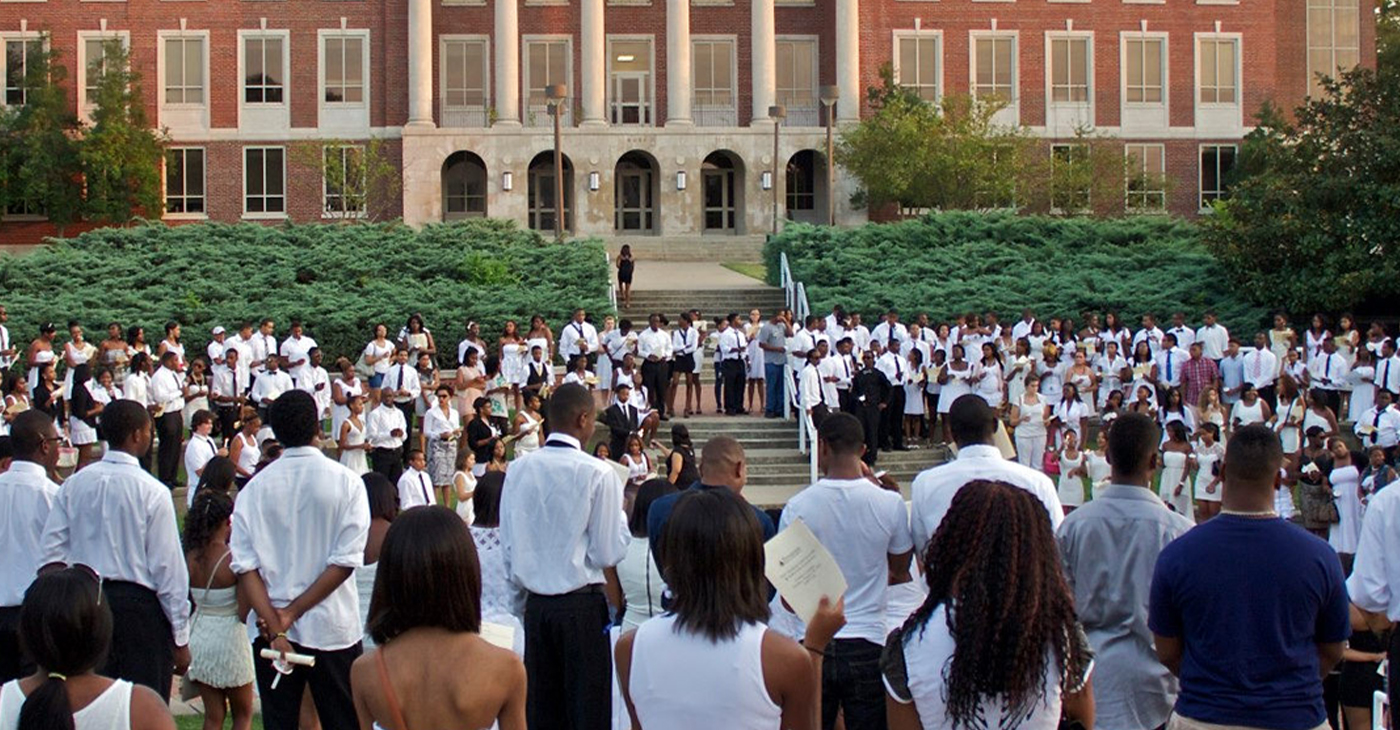
By Stacy M. Brown, NNPA Newswire Senior National Correspondent
@StacyBrownMedia
Tennessee State University (TSU), the state’s only public historically Black college and university (HBCU), faces a tumultuous future as Gov. Bill Lee dissolved its board, a move supported by racist conservatives and MAGA Republicans in the Tennessee General Assembly, who follow the lead of the twice-impeached, four-times indicted, alleged sexual predator former President Donald Trump. Educators and others have denounced the move as an attack on diversity, equity, and inclusion (DE&I) and a grave setback for higher education.
Critics argue that TSU’s purported financial mismanagement is a manufactured crisis rooted in decades of underinvestment by the state government. They’ve noted that it continues a trend by conservatives and the racist MAGA movement to eliminate opportunities for Blacks in education, corporate America, and the public sector.
Gevin Reynolds, a former speechwriter for Vice President Kamala Harris, emphasizes in an op-ed that TSU’s financial difficulties are not the result of university leadership because a recent audit found no evidence of fraud or malfeasance.
Reynolds noted that the disbanding of TSU’s board is not an isolated incident but part of a broader assault on DE&I initiatives nationwide. Ten states, including Tennessee, have enacted laws banning DE&I policies on college campuses, while governors appointing MAGA loyalists to university trustee positions further undermine efforts to promote inclusivity and equality.
Moreover, recent legislative actions in Tennessee, such as repealing police reform measures enacted after the killing of Tyre Nichols, underscore a troubling trend of undermining local control and perpetuating racist agendas. The new law preventing local governments from restricting police officers’ authority disregards community efforts to address systemic issues of police violence and racial profiling.
The actions echo historical efforts to suppress Black progress, reminiscent of the violent backlash against gains made during the Reconstruction era. President Joe Biden warned during an appearance in New York last month that Trump desires to bring the nation back to the 18th and 19th centuries – in other words, to see, among other things, African Americans back in the chains of slavery, women subservient to men without any say over their bodies, and all voting rights restricted to white men.
The parallels are stark, with white supremacist ideologies used to justify attacks on Black institutions and disenfranchise marginalized communities, Reynolds argued.
In response to these challenges, advocates stress the urgency of collective action to defend democracy and combat systemic racism. Understanding that attacks on institutions like TSU are symptomatic of broader threats to democratic norms, they call for increased civic engagement and voting at all levels of government.
The actions of people dedicated to upholding the principles of inclusivity, equity, and justice for all will determine the outcome of the ongoing fight for democracy, Reynolds noted. “We are in a war for our democracy, one whose outcome will be determined by every line on every ballot at every precinct,” he stated.
The post Tennessee State University Board Disbanded by MAGA Loyalists as Assault on DE&I Continues first appeared on BlackPressUSA.
#NNPA BlackPress
Braxton Haulcy and the Expansion of Walker|West Music Academy
May 24, 2023 – Walker West Music Academy gets an early start on expansion. Join us for a Wednesday episode of The …
The post Braxton Haulcy and the Expansion of Walker|West Music Academy first appeared on BlackPressUSA.

May 24, 2023 – Walker West Music Academy gets an early start on expansion. Join us for a Wednesday episode of The …
The post Braxton Haulcy and the Expansion of Walker|West Music Academy first appeared on BlackPressUSA.
-

 Activism4 weeks ago
Activism4 weeks agoOakland Post: Week of March 27 – April 2, 2024
-

 #NNPA BlackPress4 weeks ago
#NNPA BlackPress4 weeks agoBeloved Actor and Activist Louis Cameron Gossett Jr. Dies at 87
-

 Community1 week ago
Community1 week agoFinancial Assistance Bill for Descendants of Enslaved Persons to Help Them Purchase, Own, or Maintain a Home
-

 Activism3 weeks ago
Activism3 weeks agoOakland Post: Week of April 3 – 6, 2024
-

 Business1 week ago
Business1 week agoV.P. Kamala Harris: Americans With Criminal Records Will Soon Be Eligible for SBA Loans
-

 Activism2 weeks ago
Activism2 weeks agoOakland Post: Week of April 10 – 16, 2024
-

 Community1 week ago
Community1 week agoAG Bonta Says Oakland School Leaders Should Comply with State Laws to Avoid ‘Disparate Harm’ When Closing or Merging Schools
-

 Community6 days ago
Community6 days agoOakland WNBA Player to be Inducted Into Hall of Fame

